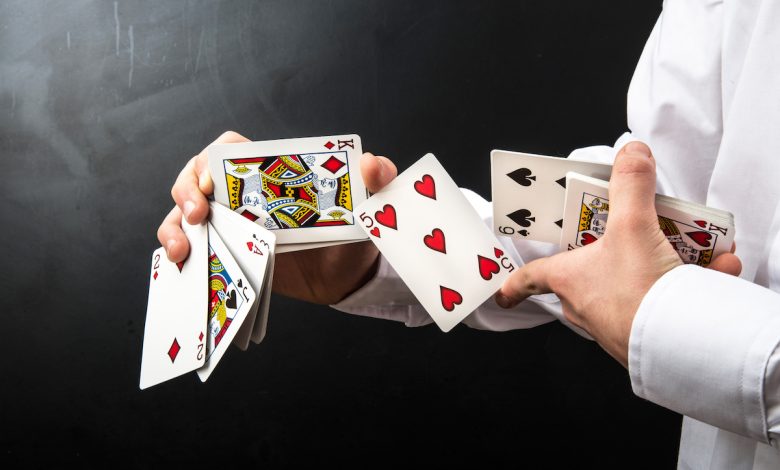The Art of Sleight of Hand: Unveiling the Secrets Behind Classic Magic Tricks

Sleight of hand is the cornerstone of many classic magic tricks, captivating audiences with its illusion of impossible feats. At its core, it is the art of manipulating objects—most often cards, coins, or other small items—without the audience detecting the subtle movements that make the illusion possible. Although these tricks may seem simple, they require a high level of skill, practice, and a deep understanding of human perception. This intricate art form blends dexterity, misdirection, and timing to create moments of wonder, leaving spectators in awe of what they believe to have witnessed. In this article, we will explore the essentials of sleight of hand, how it works, and the key techniques behind some of the most iconic magic tricks.
The Principles Behind Sleight of Hand
At the heart of sleight of hand lies a delicate dance of perception and deception. The goal is not merely to manipulate an object but to do so in a way that diverts the attention of the audience, allowing the magician to work unnoticed. To achieve this, magicians rely heavily on the concept of misdirection—a technique used to focus the audience’s attention on one area, while the real action occurs elsewhere.
The Importance of Misdirection
Misdirection is the magician’s most powerful tool. It’s not about hiding the object, but rather guiding the audience’s focus so that their attention is directed elsewhere. This can be done with eye contact, gestures, or even a carefully timed verbal cue. By subtly drawing attention to something innocuous, such as a magician’s hand or the movement of their gaze, the audience is led to believe that they are watching something important, while the trick itself unfolds under their nose. For example, in a card trick, the magician may gesture with one hand while palming a card with the other, all while the audience is unaware of the subtle manipulation.
Mastering Hand and Finger Dexterity
Sleight of hand demands a level of manual dexterity that only comes with countless hours of practice. Whether it’s a magician hiding a coin in their hand or making a card vanish into thin air, these movements need to be so smooth that they are imperceptible to the naked eye. The most basic form of this technique is known as “palming,” where an object is held discreetly in the palm of the hand, seemingly vanishing when the hand is opened. However, palming requires a high degree of control, as even the slightest shift can reveal the secret.
Another fundamental technique is the “double lift” in card tricks. The magician secretly lifts two cards as one, making it appear as though only a single card has been selected. This requires precision, not only in the physical execution but also in the presentation. A well-executed double lift looks seamless, as if the magician is simply showing a single card to the audience, when in fact, they are secretly holding two.
The Role of Timing and Rhythm
While misdirection and manual dexterity are crucial, timing and rhythm play an equally vital role in sleight of hand. A magician must learn to manipulate objects at exactly the right moment, ensuring that their actions align with the audience’s expectations and perceptions. A split-second delay or premature move can ruin an entire trick, breaking the illusion.
In many magic tricks, the pace is just as important as the execution. Magicians often use a rhythm to their movements—sometimes quick, sometimes slow—creating an experience that feels natural to the audience, even though it is meticulously crafted. A good magician knows when to accelerate or decelerate the action, drawing the audience in by making them feel they are in control of the experience, all the while keeping them unaware of the underlying secrets.
Practice and Precision: The Path to Mastery
Sleight of hand is not something that can be learned overnight. It is a skill that demands relentless practice and a commitment to perfecting even the smallest of details. Most magicians spend years mastering techniques, practicing in front of mirrors, or performing for small audiences to refine their skills. Often, the practice involves not only improving the physical movements but also gaining a deep understanding of psychology—knowing how people perceive motion, light, and attention.
Furthermore, magicians must practice in various conditions—working in low light, performing for large groups, or executing tricks in front of skeptical audiences. This experience helps them to develop an intuitive feel for how to perform in different environments, making their tricks appear flawless regardless of external circumstances.
Classic Sleight of Hand Tricks
There are a number of classic magic tricks that rely heavily on sleight of hand, and understanding the techniques behind these tricks provides insight into the brilliance of the art. One such trick is the “coin vanish,” where a coin seemingly disappears from the magician’s hand. The trick lies in the magician’s ability to subtly hide the coin while making it appear to vanish, often using a combination of palming and misdirection.
Similarly, the “cups and balls” trick is a staple of sleight of hand performances. In this routine, small balls are made to disappear and reappear under cups, seemingly at will. The magician uses quick hand movements and deceptive motions to make it appear that the balls are vanishing, even though they are secretly hidden or switched.
In card magic, the “ambitious card” routine is a perfect example of sleight of hand in action. In this trick, a selected card repeatedly rises to the top of the deck, despite being placed in the middle. Through a combination of false shuffling, controlled cuts, and the double lift, the magician creates the illusion of impossible movement within the deck.
Conclusion: The Everlasting Allure of Sleight of Hand
Sleight of hand magic has stood the test of time because it taps into a fundamental desire for mystery and wonder. The blend of skill, psychology, and performance creates an art form that is as captivating today as it was centuries ago. The secrets behind classic magic tricks, though often hidden in plain sight, continue to leave us in awe, reminding us that even in a world filled with technology and scientific explanation, there is still magic to be found in the hands of a master.





